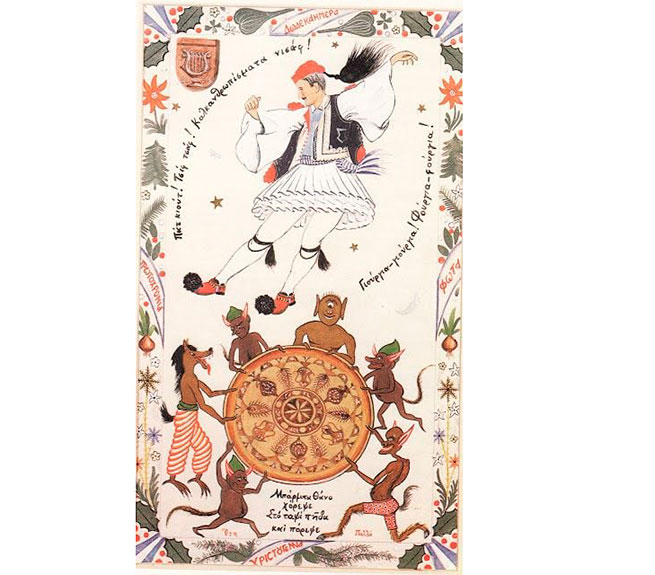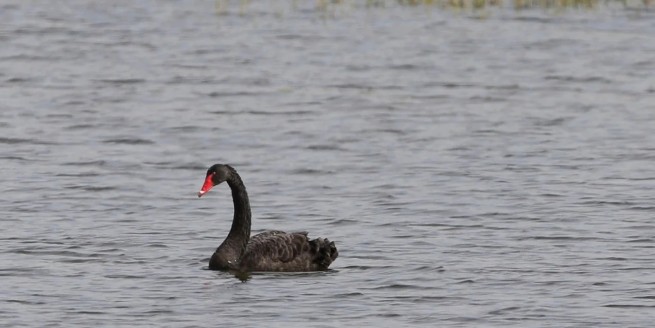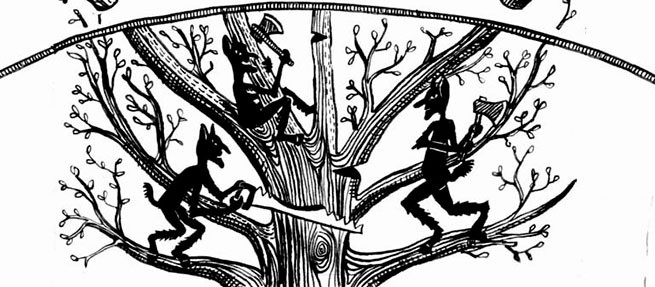Kalikantsaroy saws the Tree of Life. Credit: Circe2018/Twitter
From Christmas until the Feast of the Epiphany on January 6th, Greeks keep an extra careful watch over their homes, looking for items that have been moved or stolen Christmas treats.
This is because, according to Greek folklore, during the holidays, a group of tiny goblins called kalikantzara are born in hopes of wreaking havoc on humanity.
It is believed that these small creatures live under the earth’s crust all year round and saw down the tree of life that holds our planet and makes it spin, hoping to bring it down. However, every year during the holidays, these mischievous creatures rise to earth to steal our sweets and just cause trouble for us.
According to legends, the Kalikantsaroi rise to earth during this period every year, because Christ has not yet been baptized and therefore cannot protect humanity from evil.
Kalikantsaroi, or Greek Christmas Goblins
January 6, the Feast of the Epiphany, which is celebrated both on the day when the Magi came to Jesus, recognizing that he was the Son of God, and on the day when Jesus was baptized by the Kalikantsaros and forced to leave the surface of the planet and return to the base of the tree of life to be convinced that it is healed. So they have to start their dastardly work all over again.
Traditionally, goblins are depicted as small, dark, hairy creatures with goat-like legs, but more recent depictions of the Kalikantsaroi resemble more standard humanoid trolls or goblins. Although they have always had a negative connotation, the Kalikantsaroi are now considered more of holiday tricksters than evil spirits.
Like much of European folklore, the Kalikantsaroi come from ancient pagan traditions, but have been adapted to Christianity. Debate about the exact source of these creatures ranges from ancient Greek death spirits to small bugs associated with evil spirits that were known to destroy crops.
Despite these theories, stories of creatures similar to the Kalikantsaroi appear in folklore in the Balkans, as well as Cyprus and Turkey.

Kalikantsaroi, or Christmas goblins, in traditional Greek folklore. Credit: Mikapanteleon/Pinterest
In Greece, the kalikantsaroi – small evil creatures – represent darkness, and Jesus is the light that drives them out from the surface of the earth. Kalikantsaroi troll in the dark because they are afraid of light, especially fire. These little goblins only sneak into people’s homes after everyone has gone to bed and the fireplace is no longer lit. Once upon a time, the Greeks kept fireplaces lit throughout the holiday season to prevent the Kalikantsaroi from entering their homes.
It is believed that the Kalikantsaroi cannot count to three. The number three is of great importance in Christianity because it represents the Holy Trinity, and it is for this reason that it is said that small creatures cannot even pronounce this number.
Those hoping to keep goblins away place a colander in front of the door, as the Calicantzaroi will sit all night trying to count the holes but never get to the number two, rather than going into the house and causing a disturbance.
Other ways to keep evil spirits out of your home include reciting a prayer to the Holy Trinity, marking a cross on your doorway or, in Cyprus, scattering small sausages and fried dough to appease them.







More Stories
Making a mockery of the Acropolis for the sake of tourism
How Plato spent his last night – what the found papyri showed
Eurovision 2024: the first rehearsal of Marina Satti in Malmö has ended